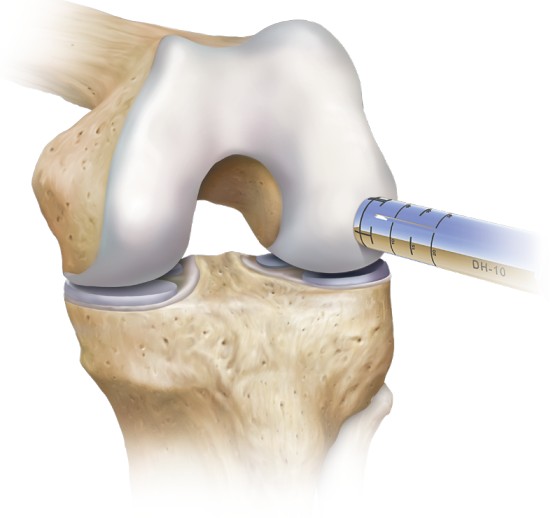
Knee Cartilage Defects
Cartilage Defects of the Knee

Cartilage defects in the knee involve damage to the articular cartilage, a smooth substance covering the bone ends to prevent friction. These defects can be degenerative due to wear and tear or traumatic from injuries like falls, jumps, or abrupt changes in direction during sports. Cartilage lacks nerves, so symptoms may not appear immediately but can lead to pain, inflammation, knee grinding, and limited mobility over time.
Damage to cartilage can range from soft spots to tears extending to the bone, disrupting joint function. Without a blood supply, cartilage defects can’t typically self-repair. Severe tears may prompt the growth of fibrocartilage, but it doesn’t offer the same smooth surface, hindering fluid motion.
Diagnosis of Cartilage Defects
Doctors diagnose knee cartilage defects through medical history, physical examination, and imaging tests like X-rays, MRI, and CT scans to evaluate tissue and bone.

Treatment of Cartilage Defects
Treatment plans consider the defect’s size, severity, location, and the patient’s age and activity level. Surgery is often necessary for pain relief and improved mobility.
Debridement Older patients with smaller defects and mild symptoms may undergo debridement. This arthroscopic procedure involves small incisions through which a camera and instruments remove damaged tissue, offering relief but not repairing the defects.
Microfracture Microfracture repairs damaged knee cartilage through an arthroscopic procedure. An awl creates small holes (microfractures) near the defects, stimulating the release of cartilage-producing cells to rebuild the area.
Osteochondral Autograft Transplantation (OATS) For smaller defects, healthy cartilage from a non-weight-bearing area is transplanted to the damaged site, filling the cartilage holes with healthy tissue.
Autologous Chondrocyte Implantation Healthy cartilage is harvested, reproduced outside the body, and re-implanted onto adjacent bone, providing protection and support.
Conservative treatments like knee rest, braces, NSAIDs, and corticosteroid injections may suffice for mild cartilage damage, but surgery might be necessary.
Have you sustained Cartilage Defects of the Knee?
There are two ways to initiate a consultation with Dr. Ravi Teja Rudraraju
You can provide current X-rays and/or MRIs for a clinical case review with with Dr. Ravi Teja Rudraraju
You can schedule an office consultation with Dr. Ravi Teja Rudraraju
Latest Post

